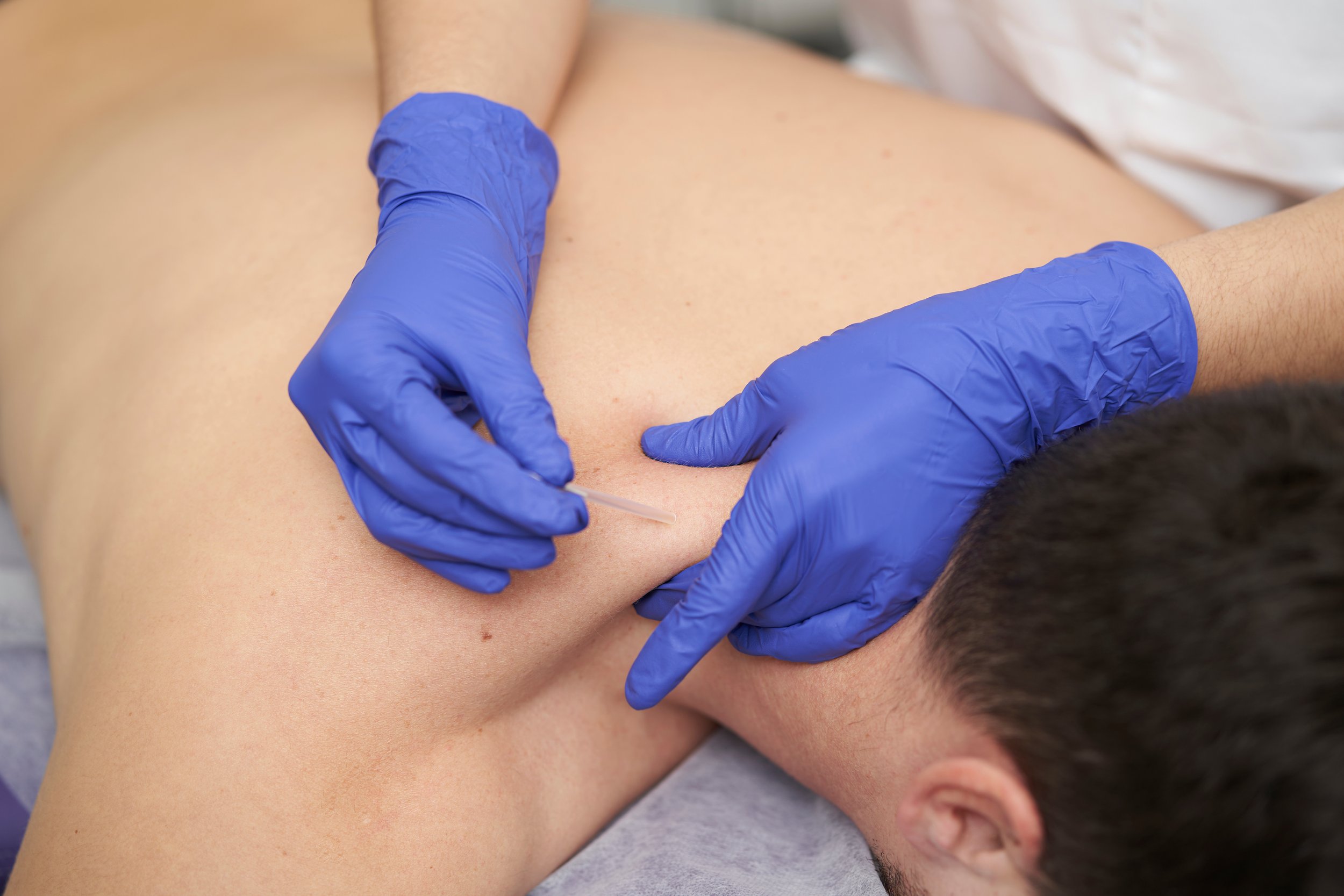What is dry needling?
Dry needling is a skilled intervention utilized by certified health practitioners to treat dysfunctional muscle and connective tissue that may be causing pain and movement issues.
Tight bands of skeletal muscle called “trigger points” can develop in the body from repetitive overuse tasks, intense athletics, or static postures that prevent movement. These trigger points can be the source of persistent pain or movement dysfunction via nerve entrapment. Ultra-thin needles can be used to penetrate these trigger points and release the affected areas, providing pain relief and restoring healthy muscular movement.
What dry needling is NOT:
Dry needling is NOT a form of acupuncture. Although it uses the same type of thin, flexible needles, trigger point dry needling uses an entirely different technique. Acupuncture is based in Eastern medicine philosophy, and is known as an alternative medicine focusing meridian points in the body and mainly penetrating just below the surface of the skin. Dry needling is a purely musculoskeletal treatment technique that is supported by a large body of peer-reviewed literature within the Western medicine world.
Dry needling does NOT inject anything into the body. The term “dry” indicates that only the sterilized needle itself is acting on the body. No outside substance or medication is introduced into the body through the needle.
What does dry needling treat?
Dry needling is a powerful and effective technique to treat musculoskeletal pain. Conditions that are commonly diagnosed in this area include:
Tendinitis/tendinosis/tendinopathies
Tennis and golfer’s elbow
Plantar fasciitis
Shoulder impingement syndrome
Muscle strains
Low back pain
Cervical and lumbar radiculopathies
Piriformis syndrome
Sciatica
Dry needling can also provide improved muscular strength and range of motion. This can assist athletic performance and generalized muscle weakness that may come about due to affected muscle areas that trigger points can cause.

